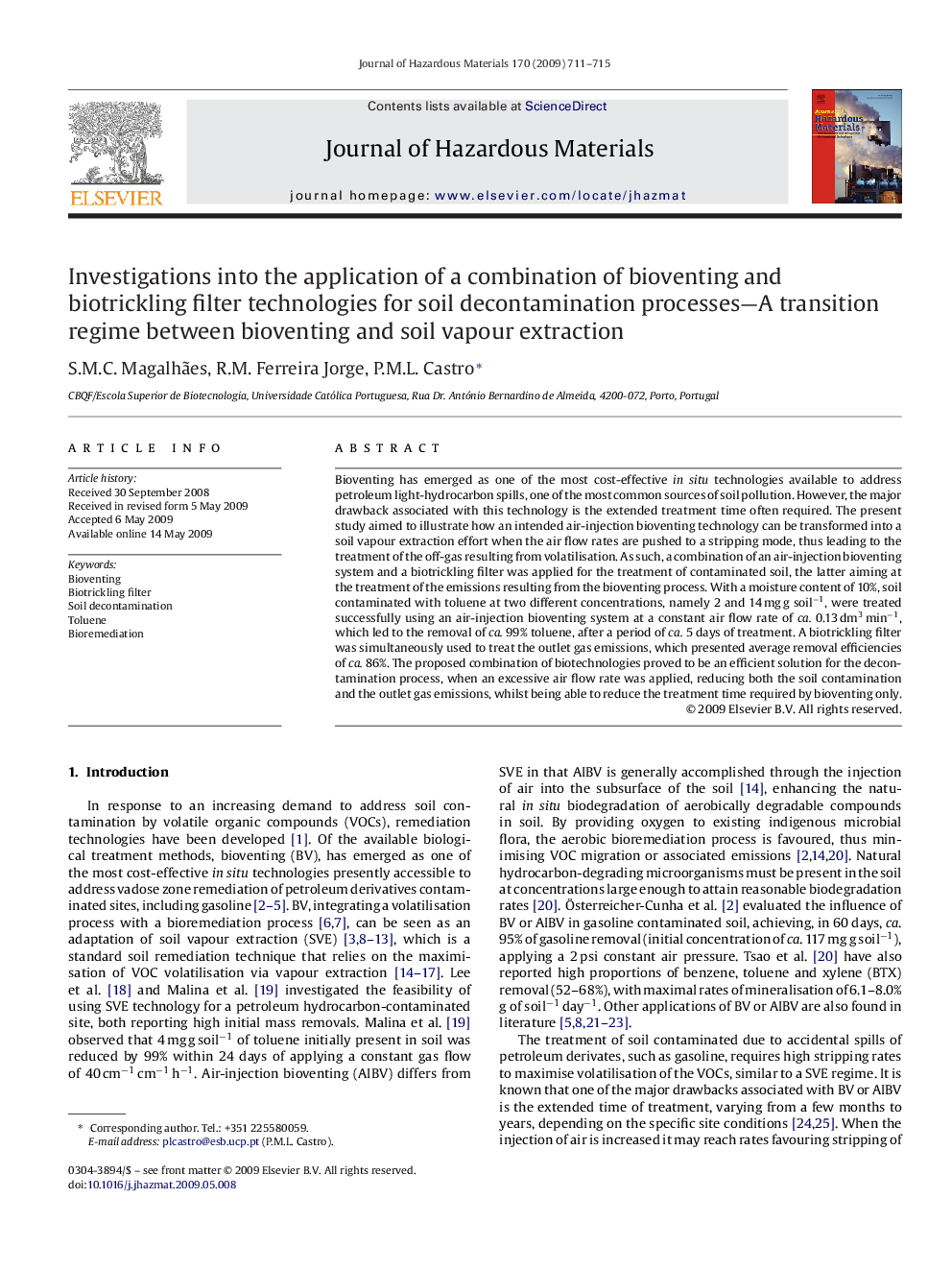| Article ID | Journal | Published Year | Pages | File Type |
|---|---|---|---|---|
| 581225 | Journal of Hazardous Materials | 2009 | 5 Pages |
Abstract
Bioventing has emerged as one of the most cost-effective in situ technologies available to address petroleum light-hydrocarbon spills, one of the most common sources of soil pollution. However, the major drawback associated with this technology is the extended treatment time often required. The present study aimed to illustrate how an intended air-injection bioventing technology can be transformed into a soil vapour extraction effort when the air flow rates are pushed to a stripping mode, thus leading to the treatment of the off-gas resulting from volatilisation. As such, a combination of an air-injection bioventing system and a biotrickling filter was applied for the treatment of contaminated soil, the latter aiming at the treatment of the emissions resulting from the bioventing process. With a moisture content of 10%, soil contaminated with toluene at two different concentrations, namely 2 and 14 mg g soilâ1, were treated successfully using an air-injection bioventing system at a constant air flow rate of ca. 0.13 dm3 minâ1, which led to the removal of ca. 99% toluene, after a period of ca. 5 days of treatment. A biotrickling filter was simultaneously used to treat the outlet gas emissions, which presented average removal efficiencies of ca. 86%. The proposed combination of biotechnologies proved to be an efficient solution for the decontamination process, when an excessive air flow rate was applied, reducing both the soil contamination and the outlet gas emissions, whilst being able to reduce the treatment time required by bioventing only.
Related Topics
Physical Sciences and Engineering
Chemical Engineering
Chemical Health and Safety
Authors
S.M.C. Magalhães, R.M. Ferreira Jorge, P.M.L. Castro,
